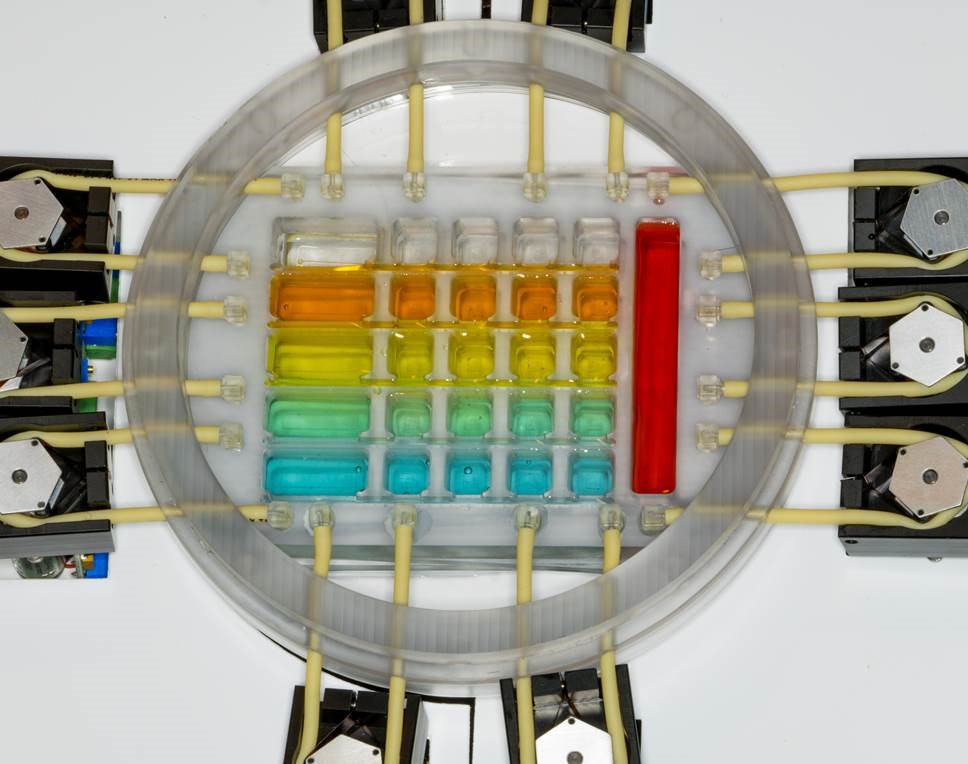Many different strategies, models, methods, and technologies are used in biomedical research. The specificity of the individual research question dictates what approaches are appropriate. In other words, different research questions necessitate the use of different approaches. Some approaches involve animal models, some others do not. While animal models are critical and employed in all fields of biomedical research, NIH encourages researchers to use complementary approaches to ensure rigorous and reproducible studies whenever possible.
NIH-funded researchers have used alternative methods extensively for scientific and medical discovery, and they continue to hold great promise for the future. As alternative methods become increasingly sophisticated, the prospect of refining, reducing, and replacing the use of animal models in research (also referred to as the 3Rs) becomes more feasible. Accordingly, NIH continues to invest into identifying and developing appropriate biological systems, including complementary/non-animal methods, to maximize research translation.
NIH convened an outside group of experts in 2022 to identify high priority areas and catalyze the use of Novel Alternative Methods to Advance Biomedical Research. This group released a report with recommendations the following year, which was endorsed by the Advisory Committee to the Director and sent forward for approval by the NIH.
In February 2024, the NIH Director, Dr. Monica Bertagnolli, accepted their recommendations. As she stated at the time, a new NIH research program under consideration will help further the recommendations by “accelerating the development, standardization, validation and use of new methods and approaches that will more accurately model human biology and can complement, or in some cases, replace traditional models.”
This is only one example of how we are supporting efforts to replace animal models in our funded studies (one of the 3Rs). Some other examples include:
- Testing cells and tissues in test tubes or cell cultures
-
3D tissue culture, also referred to as organs-on-a-chip

- Computational and mathematical models, such as for toxicity testing
-
Stem cell research

- Non-invasive diagnostic imaging
-
Clinical research
 involving people
involving people

Image from https://ncats.nih.gov
NIH also provides training and other resources for scientists to assist them in identifying and/or developing non-animal alternative approaches. Some of these resources are focused on the 3Rs. The resources below are helpful to learn more about alternatives to animal models, including the 3Rs:
-
A yearly, NIH co-sponsored symposium
 with presentations from international experts on the latest advances in the 3Rs, effective use of animal models, scientific rigor and animal welfare. Click here to see recordings from the 2020
with presentations from international experts on the latest advances in the 3Rs, effective use of animal models, scientific rigor and animal welfare. Click here to see recordings from the 2020 and 2021
and 2021 events.
events.
-
NIH leads the Interagency Coordinating Committee
 on the Validation of Alternative Methods, which coordinates activities within the federal government relevant to new toxicology test method evaluation, acceptance, and use (read more here
on the Validation of Alternative Methods, which coordinates activities within the federal government relevant to new toxicology test method evaluation, acceptance, and use (read more here  ).
).
-
Nine U.S. Government Principles
 , adopted in 1985, are the foundation for humane care and use of animals in biomedical research in this country. Of particular interest is the third principle that requires the minimum number of animals to be used as scientifically necessary and animal models to be replaced with non-animal models wherever possible. Principle IV meets the 3Rs requirement as well by requiring researchers to avoid or minimize discomfort, distress, and pain in animals consistent with sound scientific practices.
, adopted in 1985, are the foundation for humane care and use of animals in biomedical research in this country. Of particular interest is the third principle that requires the minimum number of animals to be used as scientifically necessary and animal models to be replaced with non-animal models wherever possible. Principle IV meets the 3Rs requirement as well by requiring researchers to avoid or minimize discomfort, distress, and pain in animals consistent with sound scientific practices.
Though these alternative approaches exist, and advances are being made every day, research with animals continues to be essential for understanding human diseases, biological processes, and developing treatments. Alternative approaches cannot completely replace the use of animals at this time. The alternatives simply cannot accurately replicate or model all the biologic and behavioral aspects of human disease. Until that time, animal models will remain integral for live-saving NIH-supported research. However, NIH and NIH funded scientists are continually working to reduce animal use and improve the welfare for animals that are essential for scientific progress.




